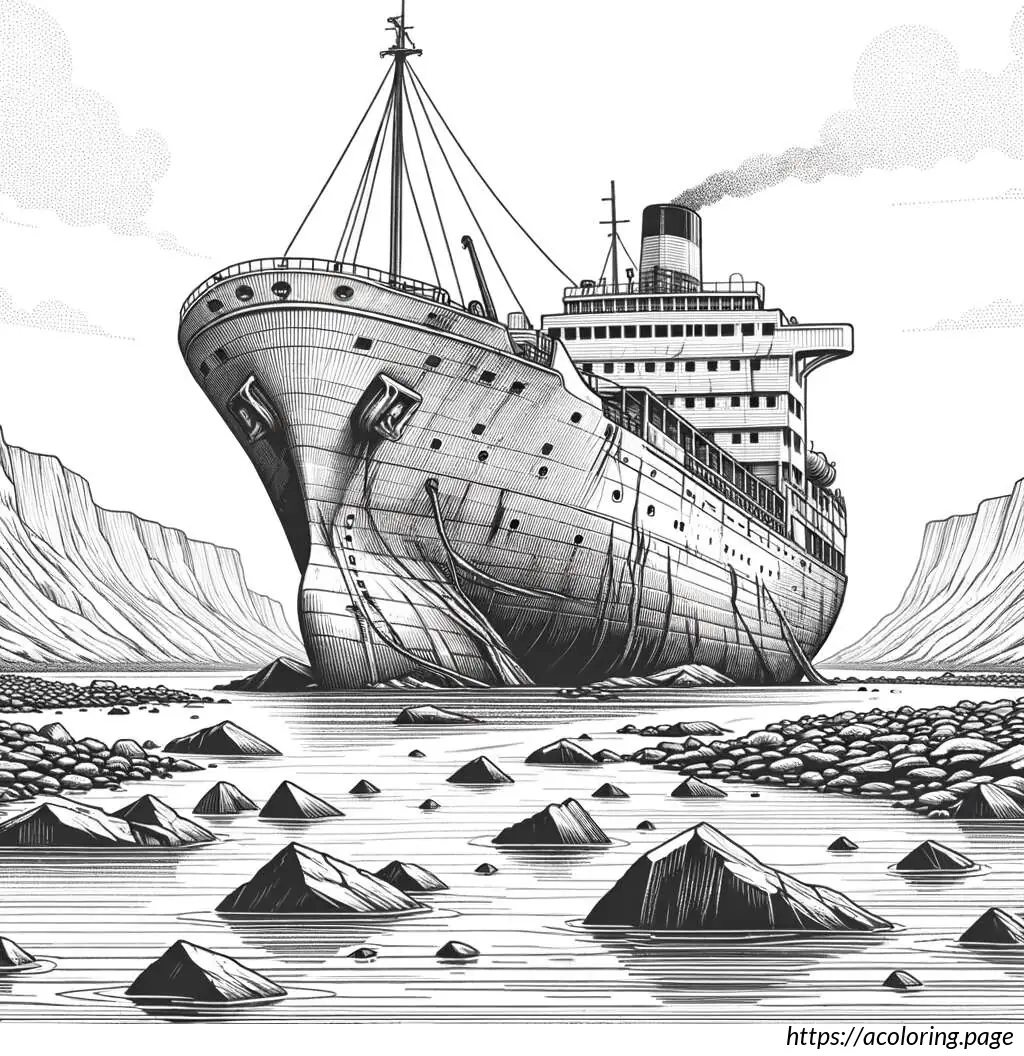

What is in this image? Be very specific. Scientific, Engineering style! No emotions, no opinions, no metaphors. Just the facts, as detailed as possible.
The image depicts a line drawing of a large ship, indicating a cargo or passenger vessel, which appears to have run aground on a riverbank. The ship''s bow is sharply elevated, a consequence of impacting the shore, suggesting a dynamic angle between the ship''s base and the land.**Ship Details**- The ship features a complex geometric structure, including multiple decks.- A centrally located, tall, cylindrical smokestack, and another, possibly an exhaust funnel or vent, emits no visible smoke or gas, indicating that the ship may not be operational.- There are multiple rectangular windows punctuating the side of the ship, likely representing passenger cabins or operational spaces.- The fore section of the vessel is jagged, possibly denoting structural damage from the collision.- The prow shows a distinctive, elevated and pointed design, typical for reducing water resistance during navigation.**Environment and Context**- The ship rests askew on a steeply inclined riverbank, consisting of varied geometric shapes that represent large rocks or boulders, present mostly below the waterline.- The impact site includes lines depicting motion or force of impact, underscoring the ship''s swift grounding.- The background features stylized hills or cliffs and simplistic, cloud-like formations scattered in the sky, suggesting a remote or less-populated area. **Scale and Proportions**- The ship''s size relative to the surrounding landscape elements suggests it is a large vessel, although exact dimensions are not provided.- The landforms surrounding the vessel are depicted without detailed scaling, making it challenging to estimate their precise size relative to the vessel.The image employs a monochromatic color palette, executed in sharp, solid black lines against a white background, typical of a coloring book illustration or a simplistic graphic print. Intricate details typically found in technical or engineering drawings, such as textures, material differences, and specific mechanical components, are absent, focusing instead on the overall form and situational context.